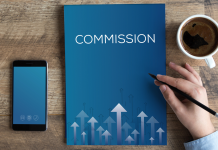
Having credit card debt is so draining and exhausting. The purchasing bills of previous months keep haunting you and stopping you from making new expenses with your money, even on the most basic needs. But, nobody deserves to live under the pressure of continuous debts. There’s always a way out that one needs to work on to get rid of credit card debts. However, this might seem difficult for some individuals. We’ve got their back; here is a step-by-step guide to paying off credit card debts.
Automate
Another easiest payment strategy to pay off the debts is the automation of payments. Once the payments are automated, you don’t have to worry about the deadline, and you can easily avoid racking up additional costs in late fees. Payments can be automated for the debt snowball or debt avalanche approach. However, one needs to be more cautious about the contribution made toward each account.
You can rely on the latest technology to make things easier. For example, Bright uses its own patented system built on 34 algorithms called MoneyScience™, which analyzes your financial habits and makes smart payments for you. It’s always on time and optimized to save you from high-interest charges. Bright also keeps it simple for everyone to use.
Make a Budget
You can’t achieve any financial goals without me making a budget. A smart budget is a strong financial plan that regulates money and expenses. If there’s no plan for money expenditures, there is no way to keep track of the purpose of expenditures. Besides, you must spend the money on paying off credit card debts. The easiest way to craft a wise budget is to list the entire income and then jot down the expenses, which should be categorized into food, utilities, housing, and transportation; other expenses can be added to the list afterward. The expenses are then supposed to be subtracted from the income. The money which is left after the necessary expenditures can be used to pay off the credit card debts. One must tighten their budget until a zero-based budget (i.e. income- expenses= zero) is achieved.
Stop using the Credit Cards for Purchasing
The simplest yet tough way to get rid of credit card debt is to stop using credit cards, which is definitely very difficult for individuals addicted to them. But, when there’s already a heavy debt, the wise move is not to increase it further, which could only be done by stopping making transactions and purchases via credit cards. The heavy debt and further usage of credit cards are quite destructive for the future and finances. The easiest way to replace a credit card is using a debit card and cash.
Save a $1000 emergency fund
Most people use a credit card for emergency expenses or funding, but in order to get rid of credit card debt, one must save up for an actual emergency fund, the least amount of which should be 1000 dollars. The 1000 dollars saving serves the purpose of buffer between you and emergency moments. Paying cash saves one from the interest amount.
Work on a Payment Strategy
If you are really dedicated to paying off your credit card debt, you must pick a payment strategy and implement it to achieve your goal as soon as possible! A concrete repayment goal and approach helps well in getting rid of the credit card debt as soon as possible!
Pay more than Minimum
Credit card users are given a minimum amount every month, which is mostly 2% to 3% of the balance. This is to make sure that the users are paying off timely. But, banks make their actual money from the interest being charged over every pay duration, and thus, the more time a user takes to pay, the more interest money banks can make.
Debt Snowball
The snowball method is an effective payment approach that uses an individual’s accomplishment as motivation. It lets the individuals prioritize the loans based on payment while emphasizing first paying off the smallest one. When an individual pays off the smallest loan, they get the convenience of rolling that amount into paying another smaller loan or contributing towards it; this continues until all of the loans are paid off. It’s just like a snowball that rolls down the hill. Using this payment approach, an individual can make bigger and bigger payments and eventually can eliminate the entire debt.
Debt Avalanche
It is another competitive payment approach that is very similar to the snowball approach. However, it works by swapping an individual’s priorities as to which payment should be cleared first. Unlike the snowball approach, it does not prioritize the payment of smaller loans; instead, it emphasizes the clearance of loans over credit cards with the highest interest. This approach is way faster than the snowball approach and is also a cheaper payment strategy at the same time.
Consider Debt Consolidation
Debt consolidation is a good option for those overwhelmed with their debt payments; consolidation into one account is suggested to get over this. Making one payment every month to get hold of the balance is relatively easier than clearing out multiple payments simultaneously.
0% Balance Transfer Credit Card
It might seem silly to get another credit card while you are trying hard to get rid of the payments of one credit card already. But, banks offer 0% balance transfer cards which ultimately helps the users to save money in the long term. It would help if you put in the effort to find a card that gives a 0% introductory period for at least 15 to 18 months, that card transfers all of the debt into that one account, and you’ll have to make a single payment every month and no interest.
Personal Loans
Similar to the above-discussed approach, a fixed-rate debt consolidation loan to pay off the debt. This does not exempt the user from interest, but the interest rates for personal loans are comparatively lower than credit cards, which helps save some extra cash.
It’s better to go a little bit hard on yourself and get rid of the credit card debts rather than being declared bankrupt. If the right payment strategies are implemented efficiently, anyone can free himself from heavy credit card debts!








